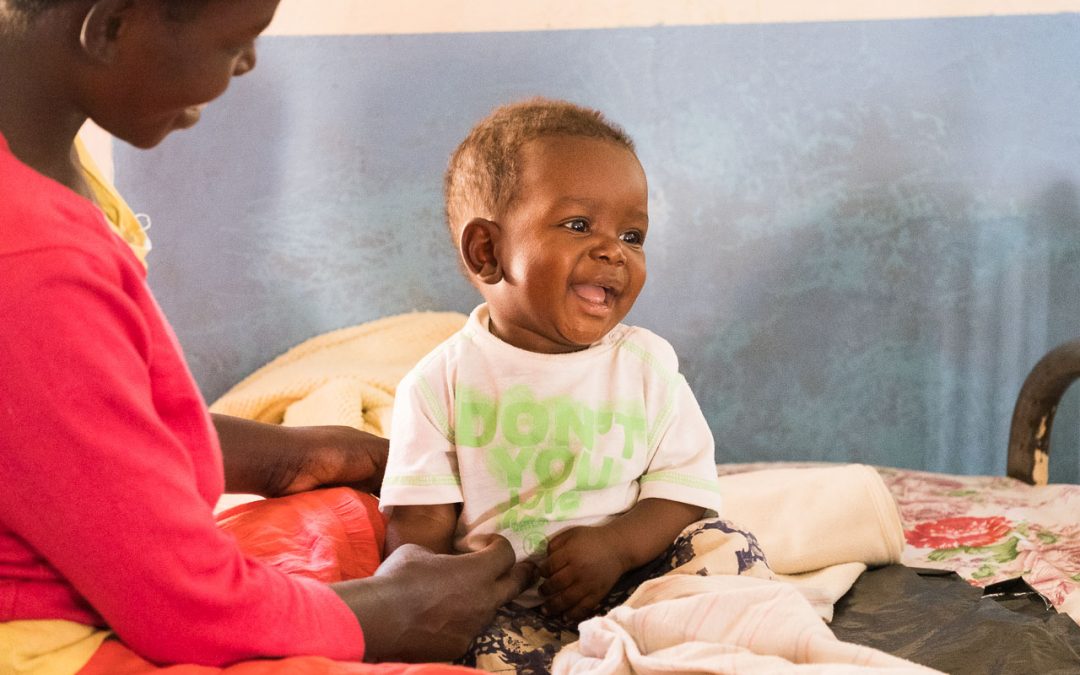Pictured: Francis is happier and healthier three days after receiving oxygen therapy for suspected pneumonia/sepsis. Image credit: Peter Casamento Photography/FREO2
Pneumonia is the biggest killer of children across the globe, causing over 800,000 deaths per year*. The Australian-based FREO2 Foundation has developed technology that addresses this need and is already saving the lives of children with pneumonia and newborns with breathing troubles in Uganda. A new alliance between Engineers Without Borders Australia (EWB) and the FREO2 Foundation, with funding from the Planet Wheeler Foundation, aims to further develop and scale this technology to reach thousands more children in developing countries.
As a lung infection, pneumonia limits the supply of oxygen to the body’s cells and prevents them from doing their job properly. Oxygen is a key treatment, but in many developing countries, unreliable access to electricity in order to run oxygen-concentrating equipment means that children aren’t able to access this life-saving care. The FREO2 Foundation has found a way to generate, store and deliver oxygen, with or without electricity. The FREO2 Foundation was formed by a group of physicists, engineers and medical experts, who were motivated by the fact that oxygen is in the air all around us – and sought to find a way to channel this air into oxygen.

A component of the FREO2 LPOS system, currently being used in Uganda. Image credit: Peter Casamento Photography/FREO2
The FREO2 LPOS system is a proven-concept, developed alongside Ugandan engineering and medical practitioners, which uses a small machine that removes nitrogen from the surrounding air, leaving almost pure oxygen. It is then stored in a large bag. Oxygen is provided to the patients, while any excess oxygen is stored in a low-pressure oxygen storage system. When the electricity goes out, gravity fed water automatically pushes the oxygen into the bag through pipes, and into the medical ward. The height the water is stored at is carefully calculated to ensure the right pressure for patients. This ingenious system has so far treated over 400 children. The system is currently in use and supporting remote health centres in Uganda that are at the periphery of the health system, where no other viable solution to provide oxygen to these children is available.
With this pilot success, the FREO2 Foundation engaged EWB Australia to assist in further developing and scaling this technology. EWB’s work in developing and socialising appropriate technology with remote communities spans Cambodia, Timor-Leste, Vanuatu, Myanmar and remote Indigenous communities in Australia, where a deeply inclusive, community-centred technology development approach is applied to achieve real, sustainable impact. The alliance will employ engineering design and development of further technologies with an aim to deliver equitable, sustainable and scalable technologies.
“This alliance feeds into the core of our work at EWB, which is to ensure technology for all, focusing on remote and vulnerable communities. We’re excited by the scalable potential of this technology. This alliance forms a powerful base to bring EWB’s approach to technology development for and with communities, to scale, and with immediate lifesaving results for children and for families whose lives are devastatingly affected simply because they live in low-resource environments. With the current COVID-19 pandemic impacting vulnerable communities in the region and around the globe, we all understand now more than ever, how critical a reliable oxygen supply in health centres is,” says Eleanor Loudon, CEO, EWB Australia.
The initial focus of this alliance aims to support the transition of technology from prototype to mass-production. Key to this is ensuring the appropriateness for context, which includes usability, durability, maintenance and the delivery through existing supply chains. The alliance will also support the piloting of these technologies in Uganda, ahead of scaling and expanding into other geographic areas, such as Timor-Leste.
*Source: Vizhub


